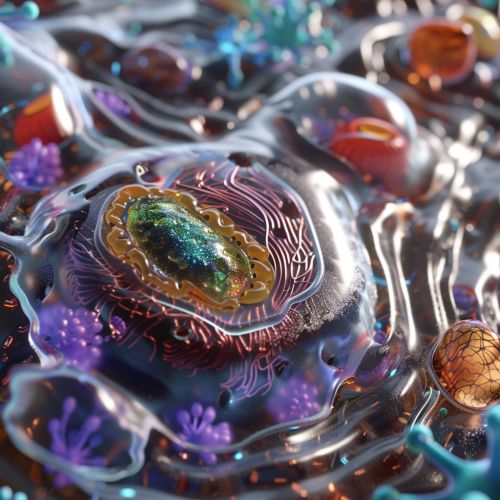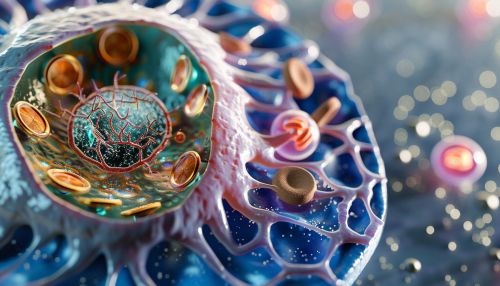Cells
Introduction
Cells are the basic building blocks of all living organisms. They are the smallest units of life that can replicate independently, and are often called the "building blocks of life". The study of cells is called cell biology.
Structure
Cells are composed of cytoplasm enclosed within a membrane, which contains many biomolecules such as proteins and nucleic acids. Most plant and animal cells are visible only under a microscope, with dimensions between 1 and 100 micrometers.


Types of Cells
There are two types of cells: prokaryotic and eukaryotic. Prokaryotic cells are usually independent, while eukaryotic cells are often found in multicellular organisms.
Prokaryotic Cells
Prokaryotic cells are usually smaller and simpler than eukaryotic cells. They do not have a nucleus; instead, their genetic material is free-floating within the cell. They also lack the many membrane-bound organelles found in eukaryotic cells. Most prokaryotes are bacteria or archaea.
Eukaryotic Cells
Eukaryotic cells are larger and more complex than prokaryotic cells. They have a nucleus, which houses their genetic material, and they contain a variety of other organelles, such as the mitochondria and the endoplasmic reticulum. Eukaryotic cells make up all plants, animals, and fungi.
Cell Functions
Cells perform a variety of functions that are essential for the survival of the organism. These include metabolism, protein synthesis, and replication.
Metabolism
Cells carry out a variety of metabolic reactions that provide the energy necessary for the activities of life. These reactions are catalyzed by enzymes, proteins that speed up chemical reactions.
Protein Synthesis
Cells synthesize proteins, which are used for a variety of purposes. Proteins can act as enzymes, structural elements, or signaling molecules.
Replication
Cells are capable of replicating themselves through a process called cell division. This is essential for growth and repair in multicellular organisms, and for reproduction in unicellular organisms.
Cell Theory
The cell theory, first developed in the 19th century, states that all organisms are composed of one or more cells, that the cell is the basic unit of structure and organization in organisms, and that all cells come from pre-existing cells.
